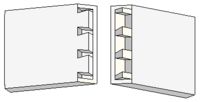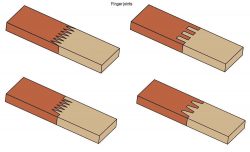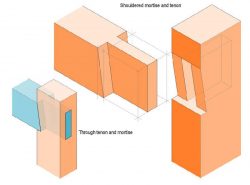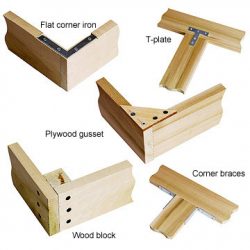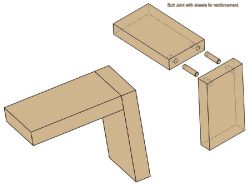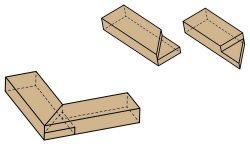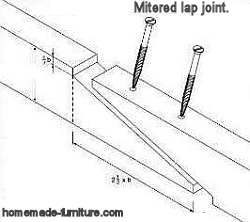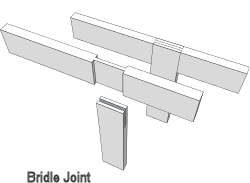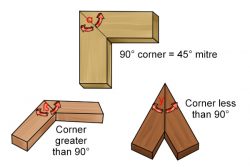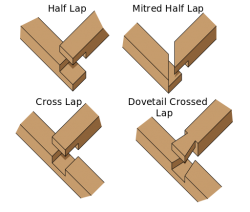Floorboards and wall panel assembly with tongue and groove joints.
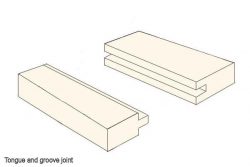
One part of the board has a slot, the other side features a ridge which fits into the slot.
This joinery method is ideal to make large panels from planks.
The planks stay joined, even when the wood shrinks.
Tongue and groove joints are widely used in the flooring industry.
Another application for this joinery method are large panels to construct of wooden houses.

To allow shrinkage it is not adviseable to glue these joints.
It is better to use hidden nails if extra attachment is needed.
Such can be the case if you use the wooden panels on a ceiling or against a wall.
Never nail or glue this joint when the tongue and groove is used in floorboards.
The reason for that is, that shrinkage is normal, and it needs to be adjusted after a certain period.
That is done by tapping against the board in one direction with a mallet and a block of wood.
By doing so the tongue and groove will join again.
This would not be possible if the boards were glued or nailed together.
Applications for the tongue and groove wood joint.
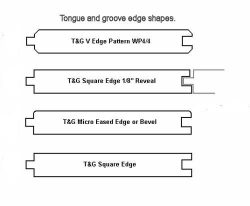
- For wooden floors.
This is the best way to make a wooden floor that can be realigned after the wood has shrunk. - Tongue and groove in carpentry for furniture.
In this case the joint will most likely be glued together. - For assembly of log cabins, garden sheds and farmhouse barns.
Providing a draft free wall and solid base for roofs.
The planks are almost always supported by a previously made frame.
The tongue and groove wood joint is less used after the introduction of plywood and chipboard.
The sides of houses needed a windproof joinery without openings when the wood shrinks.
And a gapfree panel is what this method provides, apart from strength.
A longer tongue and deeper slot allow for more shrinkage.
Read an extended description about the tongue and groove joinery on Wikipedia.

